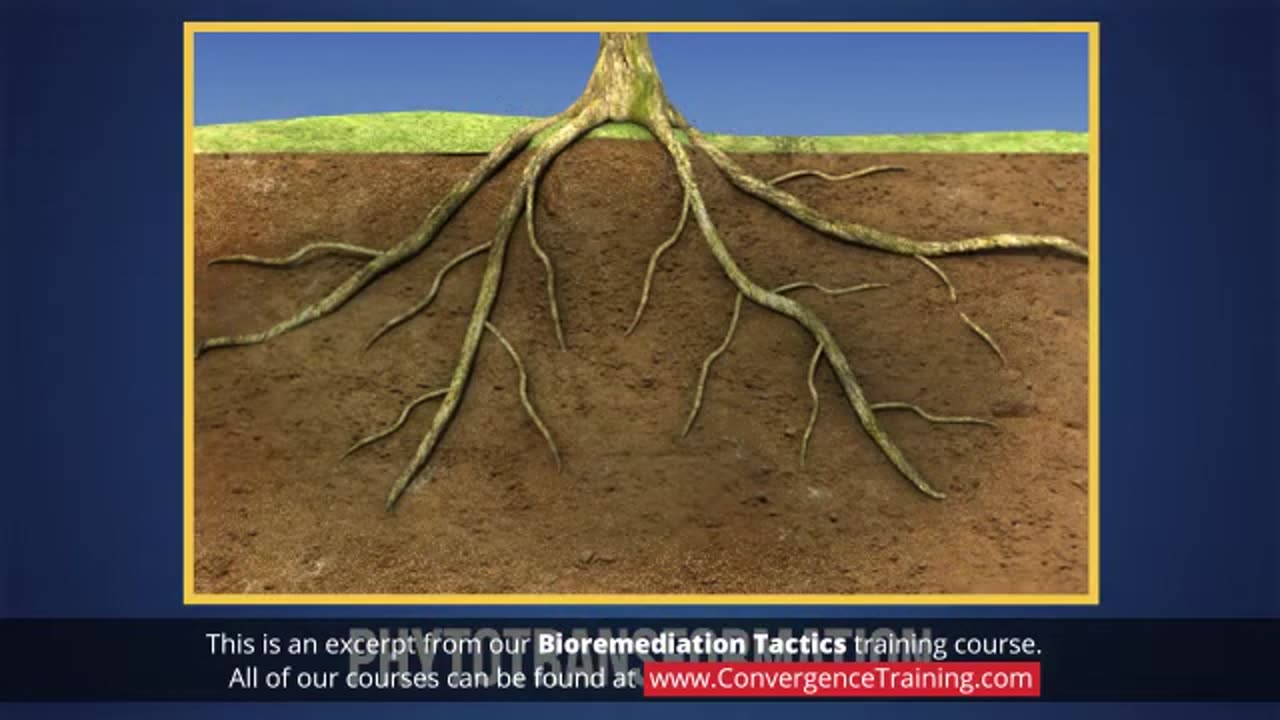Premium Only Content

Bioremediation Tactics
**Bioremediation Tactics** involve using biological organisms, primarily microorganisms or plants, to degrade, neutralize, or remove pollutants from contaminated environments such as soil, water, or air. Below are the primary tactics used in bioremediation:
---
### **1. In Situ Bioremediation** (Treating contamination on-site)
- **Natural Attenuation**: Relying on naturally occurring microbes to break down contaminants over time without intervention.
- **Biostimulation**: Adding nutrients, oxygen, or other substances to stimulate existing microbes to degrade pollutants.
- **Bioaugmentation**: Introducing specific strains of microorganisms that are highly efficient at degrading particular contaminants.
**Applications**:
- Treating petroleum hydrocarbons, chlorinated solvents, and other organic pollutants.
- Examples include cleaning up oil spills and remediating groundwater contamination.
---
### **2. Ex Situ Bioremediation** (Removing and treating contamination off-site)
- **Biopiles**: Contaminated soil is excavated, piled, and treated with nutrients and aeration to promote microbial activity.
- **Bioreactors**: Contaminated material (soil or water) is placed in a reactor where controlled microbial degradation occurs.
- **Composting**: Organic waste is biologically decomposed in the presence of oxygen to break down contaminants.
**Applications**:
- Removing heavy metals or complex hydrocarbons from soil and sludge.
- Effective for treating pesticides or industrial waste.
---
### **3. Phytoremediation** (Using plants to clean up contaminants)
- **Phytoextraction**: Plants absorb contaminants, like heavy metals, which are then harvested.
- **Phytostabilization**: Plants reduce the mobility of contaminants, preventing them from spreading.
- **Phytodegradation**: Plants or their associated microbes break down organic contaminants.
- **Rhizofiltration**: Plant roots filter out contaminants from water or wastewater.
**Applications**:
- Cleaning up lead, arsenic, and other heavy metals.
- Restoring mine tailings or agricultural runoff sites.
---
### **4. Advanced Techniques**
- **Bioelectrochemical Systems**: Using microbial fuel cells or other electrochemical setups to enhance degradation or recovery of contaminants.
- **Enzymatic Bioremediation**: Isolated enzymes from microorganisms are used to break down pollutants in specific scenarios.
- **Nanobioremediation**: Employing nanomaterials and microbes together to enhance pollutant degradation.
---
### **Factors Influencing Bioremediation Success**
- **Contaminant Type**: Organic (e.g., petroleum hydrocarbons) vs. inorganic (e.g., heavy metals).
- **Environmental Conditions**: pH, temperature, oxygen levels, and moisture.
- **Microbial Population**: Presence of appropriate microbial communities.
- **Nutrient Availability**: Adequate nutrients like nitrogen and phosphorus.
---
### **Examples of Successful Bioremediation Projects**
- **Deepwater Horizon Oil Spill (2010)**: Biostimulation was used to degrade spilled crude oil in the Gulf of Mexico.
- **Exxon Valdez Oil Spill (1989)**: Bioaugmentation and biostimulation helped restore Alaskan shores.
- **Industrial Soil Cleanup**: Phytoremediation has been applied in removing metals like cadmium from industrial sites.
---
Would you like to explore specific case studies, techniques, or training resources for bioremediation?
-
 20:24
20:24
HSESafetyInformation
1 month agoKABULI PULAO RECIPE - Original 40+ KG Afghani Meat Pulau Prepared - Street Food Qabili Plav Recipe_2
27 -
 1:38:36
1:38:36
Glenn Greenwald
14 hours agoProf. John Mearsheimer on Israel's Destruction of Gaza, Trump Admin Attacks on Universities & Speech, Yemen Bombings, Tariffs & Competition with China; Plus: Q&A with Glenn | SYSTEM UPDATE #434
178K121 -
 4:01:18
4:01:18
Alex Zedra
11 hours agoLIVE! Playing Verdansk all night
88.5K5 -

Father Russell
3 hours agoJust Gameplay Day | Chill and Kill
17.8K -
 4:09:39
4:09:39
I_Came_With_Fire_Podcast
19 hours agoTARIFF TAKEOVER | REDCOATS 2.0 | DOGE FINDS SOMETHING HORRIBLE
58.1K16 -
 DVR
DVR
Dorian_D
13 hours ago🔥🔥 Hades PS5 Blind Playthrough LIVE! 🔥🔥
11.6K -
 8:00:00
8:00:00
SpartakusLIVE
1 day agoThe MACHINE is back after a RESTFUL 4 hours of sleep
182K8 -
 6:10:55
6:10:55
Eternal_Spartan
12 hours agoLive at 9pm Central! Come Hang Out w/ a USMC Vet Playing HALO! Can't Wait to See Everyone!!
68.1K3 -
 5:09:12
5:09:12
EzekielMaxwellVT
14 hours agoVTuber/VRumbler - Vampire The Masquerade - Listening to the voices in Jo's head
46.1K1 -
 6:48:45
6:48:45
Welsh Girl
14 hours ago🔴 Minecraft - Finding the Ender Dragon - DAY 7
62.5K5